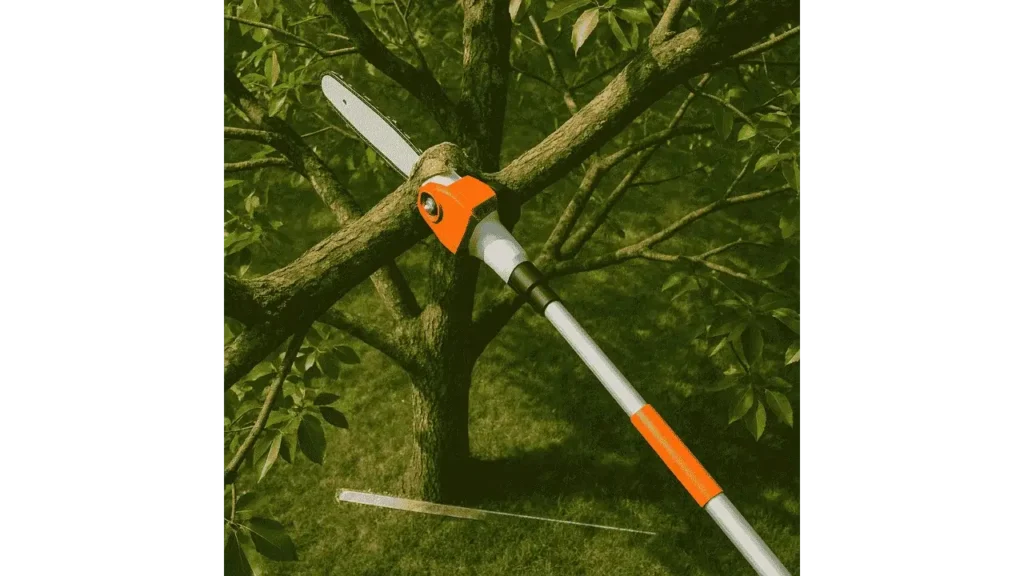As a tool expert who’s handled everything from electric pole saws to commercial-grade chainsaws, I’ve seen firsthand how compatibility issues confuse even seasoned homeowners. The idea that long extension poles for chainsaws are interchangeable across brands might seem logical, but it’s misleading. Compatibility isn’t about length alone. It hinges on shaft design, drive system alignment, and locking mechanisms. If those aren’t perfectly matched, the result can be poor performance, or worse, safety hazards. In this post, I’ll break down how pole types work, which brands play well together, and how to avoid costly mismatches.

Common Pole Types & Connection Formats
Split-Shaft Extension Poles
These are often used with trimmers and pole saws and feature a drive shaft that transfers power between attachments. Quick-connect hubs allow for fast switching between tools. Brands like Ryobi, Craftsman, Troy-Bilt, and Remington use similar split-shaft profiles and are sometimes compatible with minimal adapters. Tool repair expert Kevin Aldridge notes,
“Split-shaft designs follow a semi-standard shape, making some brands cross-compatible, but users should always double-check alignment and locking fit.”
Quik-Lok or Modular Power Head Systems
Proprietary systems such as EGO Power+, WORX Nitro, and Milwaukee M18 Quik-Lok use specialized collars and locking mechanisms that are engineered for their own toolsets. These systems are not universal, but they do provide a strong, secure fit that performs well under load. Mixing and matching across brands is not possible with these setups.
Examples of “Universal” Long Poles
RYOBI EXPAND‑IT Pole Saw Attachment
This is one of the few attachments that truly works across multiple brands. The EXPAND‑IT system supports most attachment-capable trimmers with split shafts, offering a rare form of universal fit without compromising safety or performance.
WORX Nitro Driveshare 10″ Attachment
This tool is compatible with multiple drive-share heads, again thanks to split-shaft standardization. It’s an excellent example of how shared shaft designs can lead to safe cross-brand usage without the risk of poor alignment.
Amazon “Universal” Pole Saw Attachment
Many generic pole attachments advertise compatibility with 1-inch round or square shafts. However, users should proceed with caution. Always verify torque limits, shaft shape, and locking mechanism compatibility before attaching. “Universal” often means “might fit,” not “will perform safely.” As arborist technician Daniel Cho explains,
“Universal poles may fit, but without a perfect match, they often rattle under torque or compromise cutting accuracy.”
Limitations & Caveats
Fit vs. Safety
Even if a pole fits mechanically, it doesn’t guarantee safe function. If drivers and couplings aren’t perfectly aligned, you may face issues like increased vibration, slipping, or chain disengagement. Proprietary systems are designed with specific torque tolerances and locking collars, and changing components can compromise tool safety.
Warranty & Liability Risks
Combining parts from different manufacturers can void warranties. In the case of injury or malfunction, liability protections may not apply if the setup involves mismatched tools. Always read the manufacturer’s fine print before modifying any system.
Best Practices & Recommendations
The best rule of thumb is simple: always match the pole and tool by manufacturer to ensure top performance and safety. If you’re exploring universal options, stick to known, compatible systems like Ryobi EXPAND‑IT or WORX Nitro. Avoid generic attachments unless you’ve confirmed full compatibility.
When uncertain, it’s safer and more efficient to purchase a complete pole saw kit where all parts are engineered to work together.
Final Takeaways
So, are long poles for chainsaws universal? Not quite. While some split-shaft systems like Ryobi and WORX offer limited cross-brand compatibility, most proprietary modular tools are brand-specific and should not be mixed.
Before combining any parts, verify shaft shape, locking mechanism, and brand compatibility to avoid poor performance or unsafe operation.
- How Many Watts Does a Circular Saw Use and Why Does It Matter? - December 1, 2025
- Can You Cut Acrylic With a Circular Saw Safely and Cleanly? - November 29, 2025
- Which Way Does a Circular Saw Blade Go on Your Saw? - November 28, 2025
